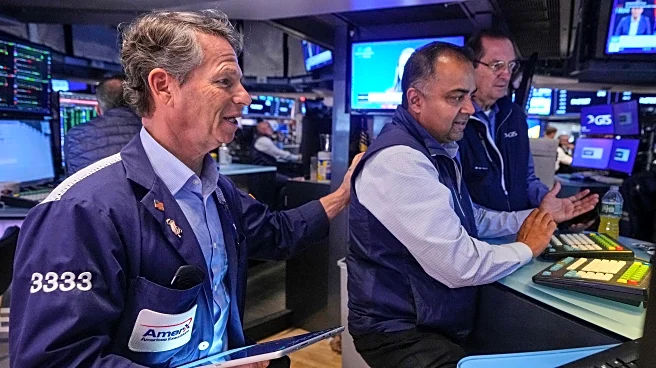What's Happening?
Goldman Sachs has issued a warning that the current optimistic GDP estimates for the U.S. economy may be overly positive due to a stagnant jobs market. According to Jan Hatzius, Goldman’s chief economist,
while GDP estimates have risen sharply during the government shutdown, with Q2 tracking at 3.8% and Q3 at 3.3%, the labor market shows signs of stagnation. Surveys indicate that employment growth in manufacturing and services has fallen below the index midpoint, suggesting potential stagnation or contraction. This is compounded by businesses front-loading orders in response to President Trump’s tariff plans, which has distorted growth figures. The Federal Reserve is expected to cut rates again this year, but the labor market's weakness could challenge the positive economic outlook.
Why It's Important?
The potential overestimation of GDP growth could have significant implications for economic policy and market expectations. If the labor market continues to stagnate, it could lead to reduced consumer spending and slower economic growth, affecting businesses and investors. The reliance on preliminary GDP estimates without considering labor market indicators could mislead policymakers and stakeholders. Additionally, the impact of tariffs and changing business behaviors could further complicate economic forecasts. The situation highlights the importance of comprehensive data analysis in economic planning and the potential risks of relying on incomplete information.
What's Next?
The Federal Reserve's anticipated rate cuts may provide some economic stimulus, but the effectiveness will depend on the labor market's response. Policymakers and businesses will need to monitor employment trends closely to adjust strategies accordingly. The ongoing trade tensions and tariff impacts will also require careful navigation to mitigate potential negative effects on the economy. Stakeholders may need to prepare for a more cautious economic environment if labor market conditions do not improve.
Beyond the Headlines
The challenges faced by the labor market, particularly for younger workers, underscore the broader implications of technological advancements like artificial intelligence. As AI continues to penetrate various industries, it may further impact job opportunities, especially in routine cognitive occupations. This could lead to a shift in workforce dynamics and necessitate new approaches to education and training to equip workers with relevant skills.













